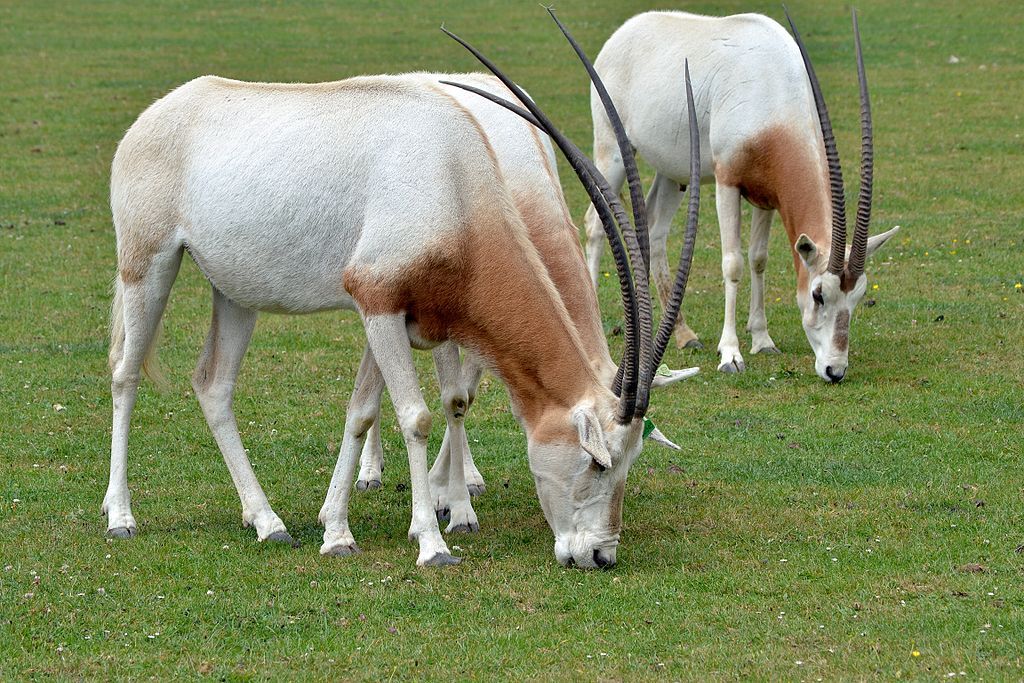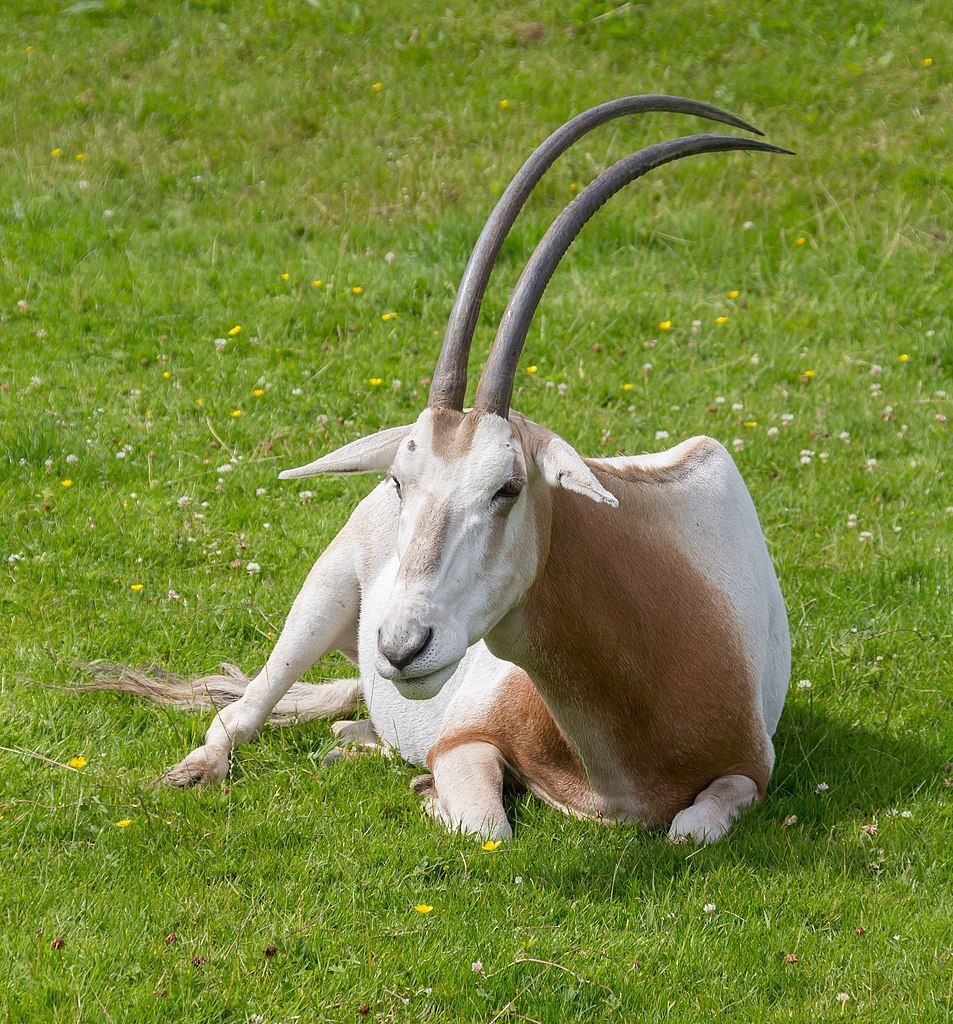
7 November 2022
The scimitar-horned oryx or scimitar oryx (Oryx dammah) is extinct in the wild but not extinct on Earth. These iconic animals still exist because their beauty prompted us to preserve them.
Scimitar-horned oryx are desert antelopes that can survive without water for months or years by absorbing water from the plants they eat. Native to the Sahel (pink on map below), there may have been 1 million of them at the height of their population in the early Holocene (9500–4500 BPE) but they declined over the centuries due to climate change and hunting.

However they were already iconic. Ancient Egyptians domesticated them, Ancient Romans bred them. They were prized for their horns and meat.

Unfortunately the wild population of scimitar oryx dropped to less than 200 by the early 1980’s and within 10 years the last ever seen was in Chad. Declared extinct in the wild in 2000, they still existed in captivity.
Soon captive breeding programs looked for suitable locations in the Sahel for the antelope’s reintroduction and began breeding them in zoos and in herds to succeed in the wild. In the U.S., ranches in Texas breed them for reintroduction and for hunting.
To get an idea of what the animals look like, see this video from the Greater Vancouver Zoo.
Thanks to captive breeding, the first scimitar-horned oryx were released in Chad in 2016, as shown in this video.
Many endangered species go extinct before we know they exist. That didn’t happen to this iconic animal.
(photos from Wikimedia Commons, map from researchgate; click on the captions to see the originals)